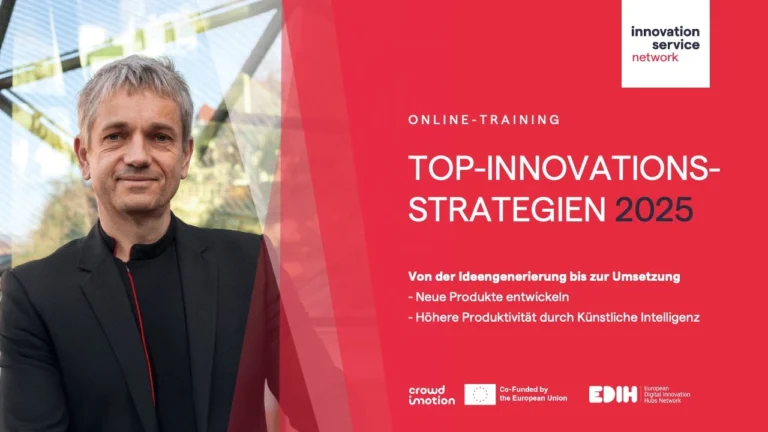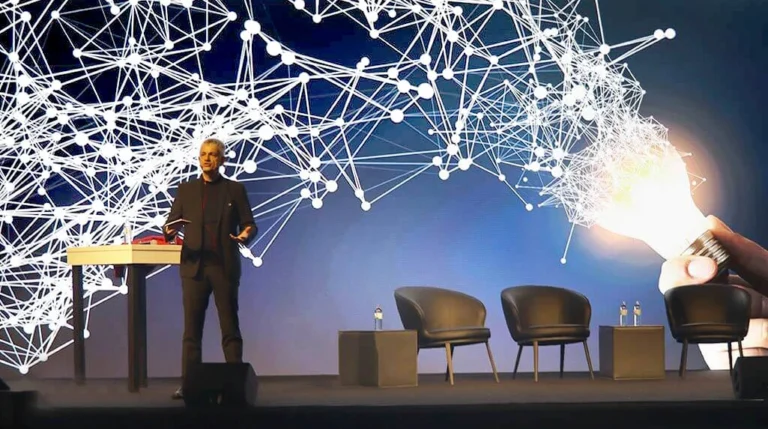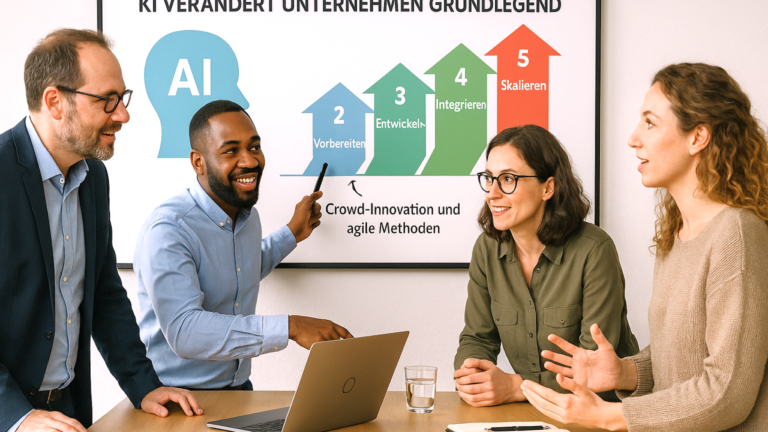
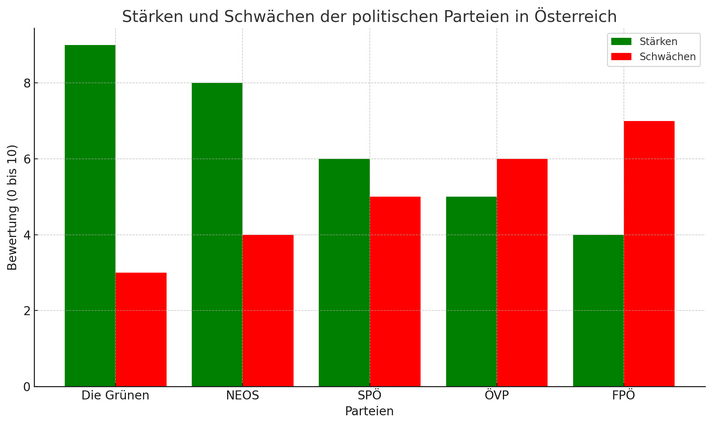
Since the current election campaign for the National Council elections has, in my opinion, neglected the topics of innovation and the future, I have started a small experiment with Chat GPT for the current newsletter. In several queries, I tried to analyze the structure and characteristics of the innovative capacity of political parties in Austria. My first query was: “Analyze the innovative capacity of the most important political parties in Austria and give a well-founded ranking.” Translated with DeepL.com (free version)
The first evaluation in verbal form has revealed a rather interesting structure of criteria that I consider to be quite relevant. The period from 2013 to 2023 covered by openAI also explains why the KPÖ is not mentioned in the list, although this party has recently received increased support from voters.
The details of the evaluation will now follow. My personal conclusion to OpenAI's comments can be found at the end of the newsletter.
The innovativeness of political parties can be analyzed on several levels, including the way they develop new ideas, adapt political programs and implement technological or organizational innovations. In Austria, several parties play a central role: the Österreichische Volkspartei (ÖVP), the Sozialdemokratische Partei Österreichs (SPÖ), the Freiheitliche Partei Österreichs (FPÖ), the NEOS and the Die Grünen. The innovative capacity of these parties can be ranked based on various factors such as digitalization, programme development, internal reforms and reaction to social trends.

Here you can see the bar chart comparing the strengths (green) and weaknesses (red) of the main political parties in Austria. Each party is listed on the x-axis, while the ratings on a scale of 0 to 10 represent the relative strength and weakness.
The Greens and the NEOS have the strongest positive values, while the FPÖ shows the greatest weaknesses in the comparison. The SPÖ and ÖVP are in the middle, with moderate strengths but also noticeable weaknesses. Details on the strengths and weaknesses of the individual parties are listed below:
Strengths in the ability to innovate:
Weaknesses
Strengths in the ability to innovate:
Weaknesses
Strengths in the ability to innovate:
Weaknesses
Strengths in the ability to innovate:
Weaknesses
Strengths in the ability to innovate:
Weaknesses
This ranking is based on the balance between substantive and structural innovation in combination with how the parties deal with current social and technological challenges.
Naturally, I was curious as to how the AI arrived at this result and I therefore created further detailed queries. Interesting details were thrown up:
In order to differentiate the bars for each party according to specific criteria, I will divide the strengths and weaknesses into different subcategories. The criteria I will use for each party include:
The strengths and weaknesses were then divided into these criteria and a summed bar chart was created showing the composition of the individual bars. The values for each party in these categories were determined on a scale of 0 to 10, based on OpenAI's assessment of the respective innovation capabilities and obstacles.
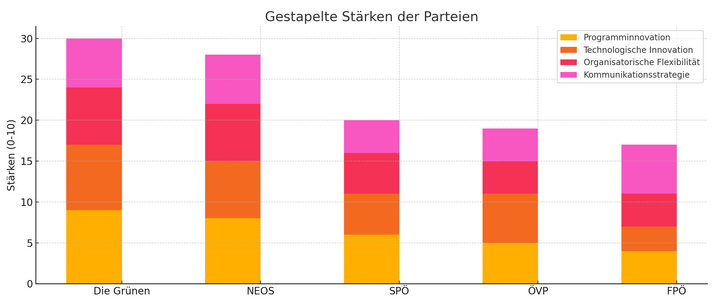

The analysis of the innovative capacity of political parties in Austria is based on current developments and trends over the last 5 to 10 years. This period covers roughly the years 2013 to 2023 and reflects political changes, election campaigns, internal reforms and the parties' adaptation to social and technological developments during this period.
The assessments therefore reflect the parties' ability to innovate during this period and their approach to social, technological and political challenges.
The strength of a very well-trained AI is also evident in this query. It would not have been possible for me personally to bring together a time span of 10 years with different details in a short time and derive a structure and differentiation from it.
The weakness can be seen in the lack of transparency of the analyzed database and, of course, in the formulation of suitable questions and their interpretation. However, I was not concerned with the scientific relevance of the results.
In this respect, even in the age of AI, it is up to the reader to draw personal conclusions from this information from openAI.
As I am not politically active myself, it was an interesting experiment for me. In principle, I see the relevance of the proposed criteria for the assessment of innovation capability from innovation expertise.
In the current situation and economic situation, the question of how much innovation Austria needs or can cope with as a nation and where the available resources for innovation will come from appears to be particularly relevant.
I look forward to your feedback and wish you an exciting election day, but above all a relaxing Sunday!
Reinhard Willfort, Innovation Doctor, www.willfort.at
Let’s innovate together!
I am happy to offer further support for innovation projects as an Innovationdoc, sparring partner and thought collaborator.
The “Laufend-kreativ” format is based on the ideas from this newsletter and provides an opportunity to reflect on your own positioning or tackle specific tasks with me personally in nature. Book your free innovation consultation now!



